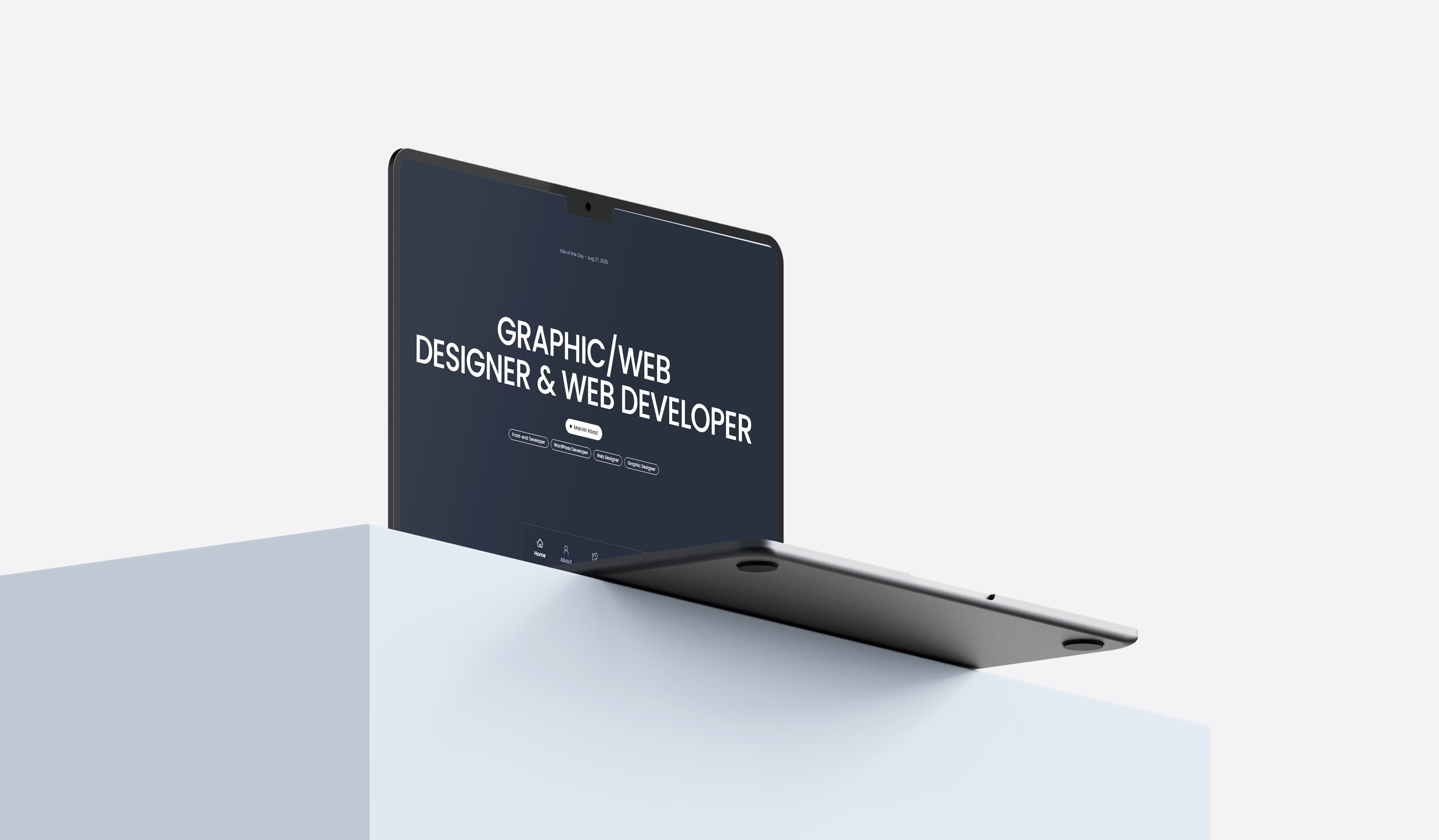Building My Portfolio Website
Behind the scenes of my personal portfolio: from Next.js frontend to Supabase backend and everything in between.
August 27, 2025
47 views
Web Development

When I set out to build my portfolio website, I didn’t just want a static page with my projects and a contact form. I wanted to treat it like a real-world full-stack application—something that showcases not only my skills in frontend development but also backend architecture, security, analytics, and scalability.
This post walks you through how I built my modern portfolio website, the technologies I used, and the features that make it more than just a digital resume.
Why I Built It This Way
Instead of a simple static site, I wanted my portfolio to have:
- A content management system so I can manage archives (blog posts, case studies, project write-ups).
- A real-time analytics dashboard to track who’s visiting and what they’re engaging with.
- A contact management system that doesn’t just send an email but organizes inquiries with extra details like budget and timeline.
- A secure admin panel with role-based access and live notifications.
Think of it as a personal mini SaaS—but for showcasing my work.
Tech Stack 🛠
Frontend
- Next.js 15 (App Router) – for fast, scalable React apps
- TypeScript – for safer, maintainable code
- Tailwind CSS – for rapid UI styling
- Radix UI & Lucide React – for accessible components and icons
- Framer Motion – for smooth animations
- SWR – for client-side caching and data fetching
Backend & Database
- Supabase – PostgreSQL with authentication and Row Level Security
- Server-Sent Events (SSE) – for real-time updates
- Resend – email delivery for contact forms
Development & Deployment
- PNPM & Monorepo setup – for clean package management
- ESLint & Prettier – to keep the codebase consistent
- Vercel + Supabase + Resend – my production deployment stack
Key Features
🔖 Archive Management System
I built a full CRUD system for blog posts and case studies with categories, tags, featured images, SEO-friendly slugs, and multiple status states (draft, published, archived).
Each archive automatically assigns me as the author:
“Marvin A. Abad — Aspiring Developer and Manager.”
📊 Real-Time Analytics
Instead of relying on Google Analytics, I implemented my own tracker:
- View counts per archive
- Visitor device & browser detection
- Geographic tracking by country
- Live dashboard updates via SSE
🛠 Admin Dashboard
A secure panel where I can:
- Manage archives
- View analytics in real time
- Handle contact inquiries
- Configure settings
📩 Contact Management
The contact form is not just a form—it’s a lead management tool.
- Supports multiple inquiry types
- Stores budget & project timelines
- Sends me notifications via Resend
- Protects against spam
🔐 Authentication & Security
- Supabase Auth for secure login
- Role-based admin privileges
- Row Level Security at the database level
- CSRF protection and safe token handling
Real-Time Goodness
One of the parts I enjoyed most was adding real-time updates with Server-Sent Events. For example, when someone visits my portfolio, I see the live analytics instantly update in my admin dashboard.
// Example: SSE connection
const { isConnected, connectionStatus } = useSSE();
It even has an automatic reconnection strategy with exponential backoff—so the live dashboard never goes dark.
Performance Optimizations
I optimized the site heavily to make sure it’s fast:
- SWR caching for frequently fetched data
- Next.js Image Optimization for responsive images
- Static Generation (ISR) where possible
- Dynamic Imports for heavy components
- Database Indexing to speed up queries
Deployment & Hosting
- Vercel → Next.js frontend
- Supabase → PostgreSQL + authentication + RLS
- Resend → Contact form email notifications
- Cloudflare → CDN + security
With this setup, my site is scalable, secure, and ready for production traffic.
Lessons Learned
- Balancing developer experience with performance optimizations
- Setting up real-time systems without relying on WebSockets
- Designing databases with security in mind from day one
- Creating a modular monorepo for better scalability
Final Thoughts
What started as “just a portfolio” ended up becoming a full-stack product. It’s a place where I can showcase my projects, but it also demonstrates my ability to build modern applications that are secure, scalable, and data-driven.
If you want to see it in action (or hire me), check out the live site and feel free to reach out through the contact form.
This project is more than a portfolio—it’s a reflection of how I build, think, and solve problems as a developer.
Tags
Next.js
React
TypeScript
Tailwind CSS
Radix UI
Lucide React
Framer Motion
SWR
Supabase
PostgreSQL
Server-Sent Events (SSE)
Resend
PNPM
Vercel